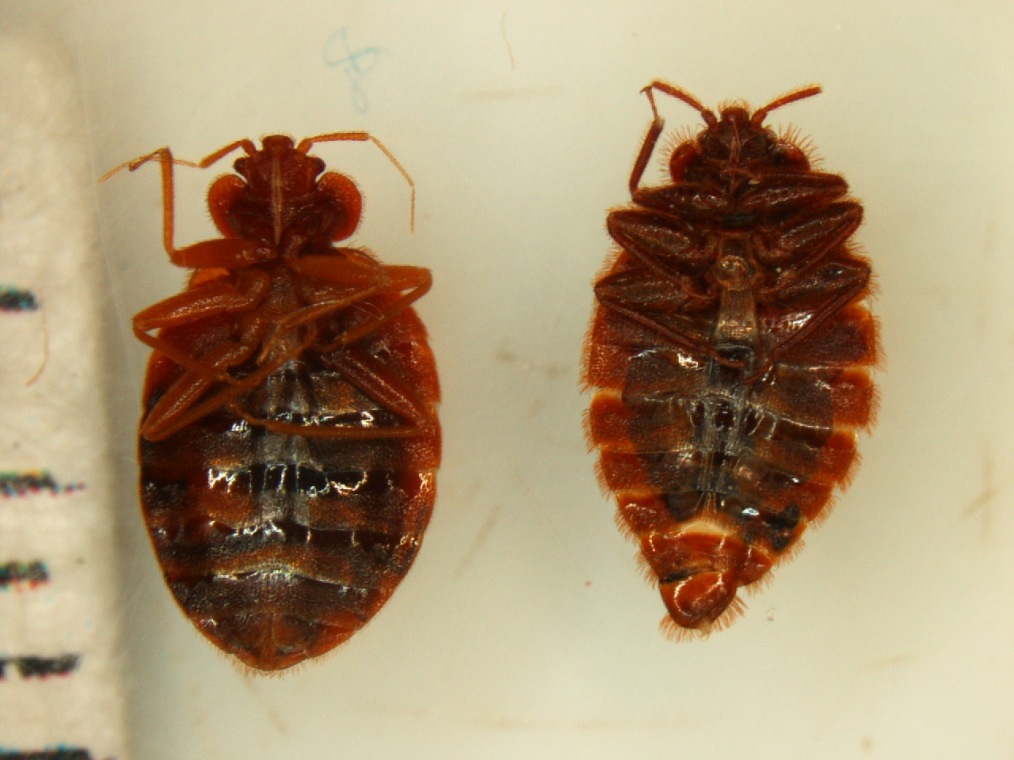It’s unseasonably warm for a winter in South Dakota. Yet, we have not seen many outdoor bugs. Indoor bug, unfortunately, is another story. This winter, we’ve had sightings of the bug deemed worthy to be called the most evil animal by Time Magazine: bed bugs. Yes, bed bugs are on the prowl, even here in South Dakota.
Interestingly enough, among the submissions to Diagnostic Clinic at SDSU, some of the bugs showed decidedly different characteristics. It turned out that we have some bat bugs mixed in with the bed bugs submission.
In the picture above, bed bug (Cimex lectularius) is the specimen on the left while bat bug (Cimes pilosellus) is the specimen on the right. Compared to bed bugs, bat bugs have longer hairs all over their bodies, as hopefully shown in the picture above. While both can feed on human, bat bugs feed primarily on bats as the name implies. Thus, bat bug infestation usually coincides with bats making home in the same structure. Bat bugs do not fare well when limited on human blood diet and consequently do not cause a prolonged infestation problem that bed bugs can pose.
Inspecting the rooms where the bugs are found is crucial. Look for bugs in seams, creases and folds of the mattress and box springs. Search the bed frame and head board thoroughly. In advanced stage of infestation, the bugs may also hide anywhere in the room, such as behind electrical switch plates, plaster cracks, underneath the rugs, etc. Cleaning all the clothes and linens in hot water and vacuuming the room and furniture thoroughly may help. Eventually, getting rid of bed bugs is tricky and if infestation continues it may be best left to pest control professionals.

